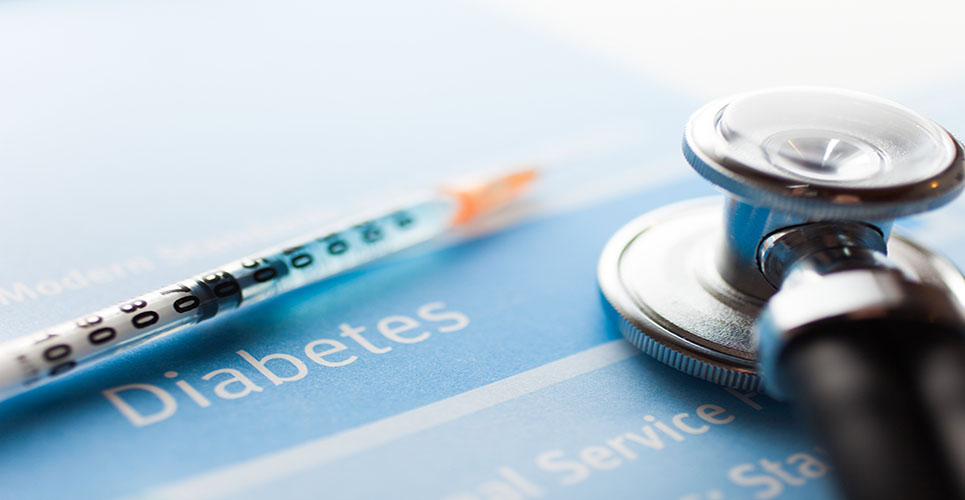Findings from a head-to-head trial comparing Victoza® (liraglutide) and lixisenatide, both in combination with metformin, have demonstrated a significantly greater reduction in blood sugar (measured by HbA1c) for liraglutide compared to lixisenatide in adults with type 2 diabetes. (1)
The results from the LIRA-LIXI trial were announced at the 51st Annual Meeting of the European Association for the Study of Diabetes (EASD) in Stockholm, Sweden.
In the study, people in the liraglutide arm achieved a significantly greater reduction in HbA1c versus lixisenatide (-1.83% versus -1.21%; P<0.0001) at 26 weeks, meeting the trial’s primary endpoint. (1) In addition, more people treated with liraglutide achieved HbA1c targets of <7% (74.2% versus 45.5%; P<0.0001) (1) and ≤6.5% (54.6% versus 26.2%; P<0.0001) compared with lixisenatide. (1)
A reduction in HbA1c can provide both a huge personal benefit and a significant cost saving through the reduction of complications. A one percentage point drop in HbA1c can lead to a 37% reduction in microvascular complications, a 14% reduction in myocardial infarctions and a 21% reduction in overall diabetes-related mortality. (2)
Professor Sudhesh Kumar from the Warwickshire Institute for the Study of Diabetes, Endocrinology and Metabolism, University Hospitals Coventry and Warwickshire, Coventry, UK commented, “Many people living with type 2 diabetes remain poorly controlled, which can lead to severe complications. These complications are extremely prevalent and can account for up to 80% of the cost of diabetes to the NHS. Therefore, it is crucial that these patients gain control of their blood glucose levels early in treatment. The significant difference in blood glucose control between liraglutide and lixisenatide reinforces the value of liraglutide as an effective treatment option for those with type 2 diabetes.”

Liraglutide also demonstrated significantly greater reductions in fasting blood sugar (-2.85mmol/l versus -1.70mmol/l; P<0.0001) and mean self-measured blood sugar (-2.64mmol/l versus -1.89mmol/l; P<0.0001) compared with lixisenatide. (1) Lixisenatide, however, had smaller changes in blood sugar after eating a meal following injection compared to liraglutide (morning meal: -2.12mmol/l versus -0.88mmol/l; P<0.0001; and evening meal: -1.88mmol/l versus -0.53mmol/l; P=0.0039). (1)
Weight loss was observed in both treatment groups (liraglutide: -4.26kg versus lixisenatide: -3.67kg; P=0.2347). (1) Systolic and diastolic blood pressure decreased with both liraglutide and lixisenatide treatment (systolic blood pressure: -4.70mmHg versus -3.49mmHg; P=0.3722; diastolic blood pressure: -2.62mmHg versus -2.69mmHg; P=0.9318, respectively). (1)
The safety profile in the LIRA-LIXI trial was similar between the two treatment groups. The most common adverse events were gastrointestinal, which included nausea and diarrhoea. No severe hypoglycaemic episodes were reported. (1)
Diabetes affects over three million people in the UK and this is expected to rise to four million in 2025. (3) Type 2 diabetes currently costs the NHS over £10 billion per year, with around 80% of this cost because of often preventable complications. (4) These include blindness, amputations and kidney failure.
References
- Nauck M et al. Once-daily liraglutide vs. lixisenatide as add-on to metformin in type 2 diabetes: a 26-week randomised controlled clinical trial. Oral presentation. Abstract number 75. 51st Annual Meeting of the European Association of Diabetes (EASD). 2015.
- Stratton I et al. Association of glycaemia with macrovascular and microvascular complications of type 2 diabetes (UKPDS 35): prospective observational study. BMJ 2000;321(7258):405–12.
- Diabetes UK. State of the Nation 2014. http://www.diabetes.org.uk/Documents/About%20Us/What%20we%20say/State%20of%20the%20nation%202014.pdf. Last accessed September 2015.
- Hex N et al. Estimating the current and future costs of Type 1 and Type 2 diabetes in the UK, including direct health costs and indirect societal and productivity costs. Diabet Med 2012;29(7):855–62.

